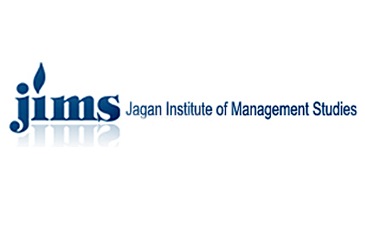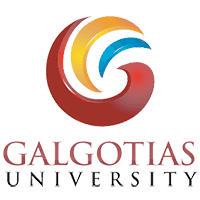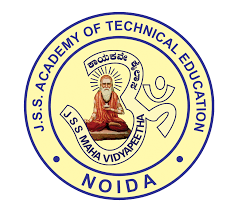Information
.jpg)
Indian Institute Of Technology, Kharagpur, popularly known as IIT Kharagpur or IIT KGP, was established in the year 1951. It is a Public Engineering Institute and is located in Kharagpur, West Bengal. The institute offers B.Tech, B.Arch., Integrated, LLB, LLM, M.Tech., MCP, M.Sc., MBA, EMBA, MMST, and Ph.D. program to the aspirants. Admissions are based on the marks secured by the students in the following entrance tests - JEE Advanced GATE IIT JAM
Motto, Mission & Vision
Dedicated to the service of the Nation
Motto
The motto of IIT Kharagpur is "Yogah Karmasu Kaushalam". This literally translates to "Excellence in action is Yoga", essentially implying that doing your work well is (true) yoga. This can be traced to Sri Krishna's discourse with Arjuna in the Bhagavad Gita. The quote, in the larger context of the Gita, urges man to acquire equanimity because a mind of equanimity allows a man to shed distracting thoughts of the effects of his deeds and concentrate on the task before him. Equanimity is the source of perfection in Karmic endeavours that leads to Salvation.
Mission
The Institute aligns all its activities to serve national interest and seeks
- To provide broad-based education, helping students hone their professional skills and acquire the best-in-class capabilities in their respective disciplines
- To draw the best expertise in science, technology, management and law so as to equip students with the skills to visualize, synthesize and execute projects in these fields
- To imbibe a spirit of entrepreneurship and innovation in its students
- To undertake sponsored research and provide consultancy services in industrial, educational and socially relevant areas
-
Vision
- To be a centre of excellence in education and research, producing global leaders in science, technology and management
- To be a hub of knowledge creation that prioritises the frontier areas of national and global importance
- To improve the life of every citizen of the country
History of IIT KGP
The history of the IIT system dates back to 1946 when a committee was set up by Hon'ble Sir Jogendra Singh, Member of the Viceroy's Executive Council, Department of Education, Health and Agriculture to consider the setting up of Higher Technical Institutions for post war industrial development in India. The 22 member committee headed by Sri N.R.Sarkar, in its report, recommended the establishment of four Higher Technical Institutions in the Eastern, Western, Northern and Southern regions, possibly on the lines of the Massachusetts Institute of Technology, USA, with a number of secondary institutions affiliated to it. The report also urged the speedy establishment of all the four institutions with the ones in the East and the West to be started immediately. The committee also felt that such institutes would not only produce undergraduates but they should be engaged in research, producing research workers and technical teachers as well. The standard of the graduates should be at par with those from first class institutions abroad. They felt that the proportion of undergraduates and postgraduate students should be 2:1.
With the above recommendations of the Sarkar committee in view, the first Indian Institute of Technology was born in May 1950 in Hijli, Kharagpur, in the eastern part of India. Initially the IIT started functioning from 5, Esplanade East, Calcutta and very soon shifted to Hijli in Sept. 1950. The present name 'Indian Institute of Technology' was adopted before the formal inauguration of the Institute on August 18, 1951, by Maulana Abul Kalam Azad. IIT Kharagpur started its journey in the old Hijli Detention Camp where some of our great freedom fighters toiled and sacrificed their lives for the independence of our country. The history of IIT Kharagpur is thus intimately linked with the history of the Hijli Detention Camp. This is possibly one of the very few Institutions all over the world which started life in a prison house.
About the Detention Camp
The district of Midnapore along with rest of Bengal and India took part in a very significant way in the revolutionary struggle against the British Raj from the early 20th century.
The large number of youth who participated in the armed struggle or the non cooperation movement could not be accommodated in ordinary jails. The then British Government decided to establish a few detention camps - the first one was located in Buxa Fort which was followed by the setting up of the Hijli Detention Camp in 1930. The Hijli Detention Camp bears a very significant mark in our freedom movement. Two unarmed detainees were shot dead here by the British Police on Sept. 16, 1931. Netaji Subhas Chandra Bose came to Hijli for collecting the bodies of the two great sons of the freedom movement - Santosh Kumar Mitra and Tarakeswar Sengupta. All the national leaders including Gurudev Rabindranath Tagore voiced their strong protests against the British Raj over this incident. The Hijli Detention Camp was closed in 1937 and was reopened again in 1940 to detain the freedom fighters without trial. In 1942 the camp was again closed and the detainees were transferred elswhere.
IIT in its Infancy
There were 224 freshers and 42 teachers in August 1951 when the first session started. The class rooms, laboratories and the Administrative office wer ehoused in the historic building of the Hijli Detention Camp. The Institute started its academic programme with only ten Departments. On March, 1952, Pandit Nehru laid the foundation stone of the New Building.
The layout of the present campus and the design of our buildings were carried out by a host of engineers and architects under the guidance of an eminent Swiss architect Dr. Werner M. Moser. A large amount of financial help was available for procuring a number of machine tools from the ministry of industry and supply. The Institute Workshop was supposed to be one of the best in the country. The Institute was fortunate enough to have Sir J.C.Ghosh, an eminent Scientist as its first Director under whose able stewadship the Institute grew in its formative years. The first Board of Governors was constituted with Dr. B.C. Roy, as the chairman and Mr. N.R.Sarkar, Sir Jehangir J. Gandhi, Dr. Tarachand, Mr. K.R.K. Menon, Mr. T. Sivasankar, Dr. S.S. Bhatnagar, Mr. H. Kabir and Dr. J.C. Ghosh as memebers. Some eminent scholars from Europe had joined this Institute in its formative years and the first two of them were Prof. R.A. Kraus and Prof.H. Tischner, who was incidentally the first Head of Electronics and ECE Department.
On Sept. 15, 1956, the Parliament of India passed an act known as the Indian Institute of Technology(Kharagpur) Act declaring this Institute as an Institute of national importance. The Institute was also given the status of an autonomous University. From this modest start in 1950, IIT Kharagpur has been engaged in a steady process of development with about 18 academic departments, five centres of excellence. the vast tree-laden campus, spreading over 2100 acres has a self contained township of over 15,000 inhabitants. Currently we have about 550 faculty, 1700 employees and 9000 students on the campus.
Similar Colleges

NATIONAL INSTITUTE OF DESIGN

PARUL UNIVERSITY

JIMS Engineering Management Technical Campus

GL Bajaj Institute of Technology and Management

IILM College of Engineering & Technology

Galgotias University

Galgotias college of engineering & technology

GNIOT Group of Institutions

NIET - Noida Institute of Engineering and Technology, Greater Noida

JSS Academy of Technical Education Noida
